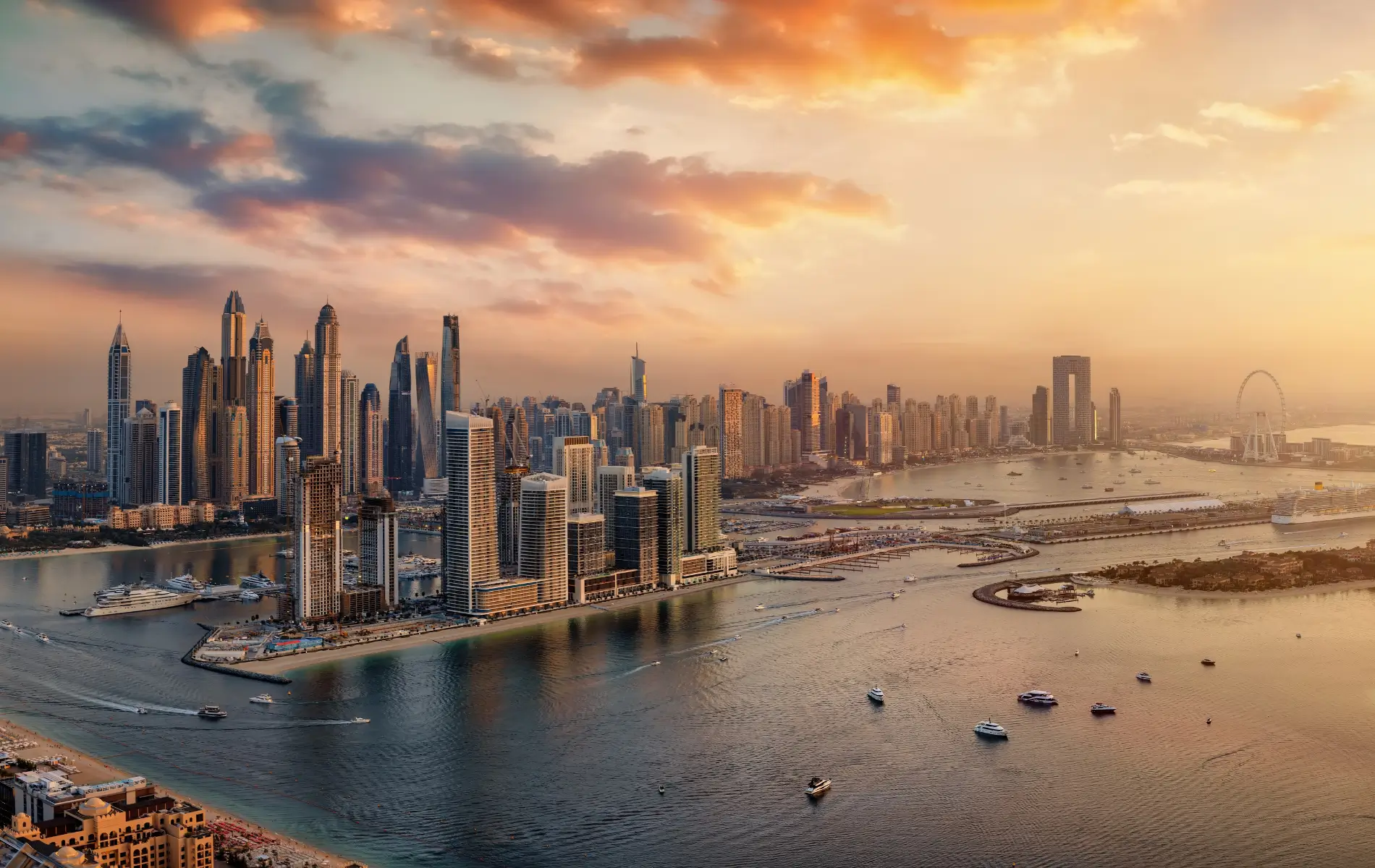


HOW DEMOGRAPHIC SHIFTS INFLUENCE DUBAI'S PROPERTY MARKET | KEY TRENDS & INSIGHTS
- Market Trends


Muhammad Farooq Alam Abbasi | 15th of March 2025
Dubai’s property market is renowned for its dynamism and resilience, but its evolution is deeply intertwined with the city’s demographic shifts. Understanding how changes in population dynamics influence real estate trends is essential for investors, developers, and policymakers alike. This article delves into the key ways in which demographic shifts are shaping Dubai’s property market.
1. Population Growth and Urban Expansion
Dubai has experienced rapid population growth over the past two decades, driven by both expatriates and a burgeoning local population. This increase in residents has spurred a corresponding demand for housing. The city’s population, which has consistently grown at a significant rate, has led to an expansion in urban areas and a surge in the development of new residential projects. As the population expands, so does the need for diverse housing options. Developers have responded by creating a range of properties, from luxury villas and high-end apartments to affordable housing units. The growth in population has also led to the development of new residential communities and neighbourhoods, particularly in emerging areas such as Dubai South and Mohammed Bin Rashid City.
2. Changing Demographic Profiles
Dubai’s demographic profile is characterised by a significant proportion of expatriates, many of whom are young professionals and high-net-worth individuals. This demographic shift has influenced the types of properties in demand. For instance, younger expatriates tend to prefer modern, high-tech apartments with amenities and easy access to work and leisure facilities. In contrast, older professionals and families might opt for larger, more luxurious villas in quieter, suburban areas. Additionally, the influx of high-net-worth individuals has driven demand for premium properties, including penthouses and waterfront villas. This demographic trend has led to a proliferation of luxury developments, particularly in iconic locations like Palm Jumeirah and Downtown Dubai.
3. Changing Lifestyles and Preferences
The COVID-19 pandemic has accelerated changes in lifestyle preferences, affecting the real estate market. With more people working from home, there has been a growing demand for properties with dedicated home office spaces and larger living areas. This shift has influenced developers to focus on creating homes that offer more space and flexibility, incorporating features like study rooms and multifunctional areas. Moreover, there is an increasing preference for properties in mixed-use developments that offer integrated amenities such as retail outlets, dining options, and recreational facilities. These lifestyle changes reflect a broader trend towards convenience and self-sufficiency in residential environments.
4. Family Dynamics and Housing Needs
The composition of households is also evolving. An increasing number of expatriates are settling in Dubai with their families, leading to greater demand for family-friendly housing options. This includes larger apartments and villas with multiple bedrooms, proximity to schools, and family-oriented community amenities such as parks and recreational areas. The rise in single-person households and smaller family units has also impacted the market, with a growing preference for smaller, more manageable living spaces. Developers are responding to these trends by offering a range of property sizes and types to cater to varying household needs.
5. Economic and Employment Trends
Economic conditions and employment trends significantly impact Dubai’s real estate market. The city’s status as a global business hub attracts a diverse workforce, influencing property demand. For instance, during periods of economic growth, there is a heightened demand for high-end properties and office spaces, while economic downturns may lead to increased demand for more affordable housing options. The introduction of new business districts and free zones has further influenced real estate trends, as these areas attract professionals and entrepreneurs who seek convenient, high-quality living spaces close to their workplaces.
6. Government Policies and Initiatives
Dubai’s government has implemented various policies and initiatives to address the evolving demographic landscape and its impact on the property market. These include long-term residency visas for investors and skilled professionals, which aim to attract and retain talent in the city. Such policies not only influence demand but also contribute to the stability and growth of the real estate sector.
7. The Role of Expatriates in Shaping the Market
According to an article published on The Nationals, The UAE’s demographic trends significantly shape its real estate market dynamics, reflecting an interplay between population characteristics and property demand. It is a known fact that expatriates account for the majority of the country’s 12.5 million population – about 88 percent or 11.06 million as of July. Breaking down the numbers, the largest age bracket in the UAE’s population, at 68 percent, is between 25 and 54 years. In terms of nationality, 4.75 million people in the country, or about 43 percent of the residents, are Indians. The intersection of people aged between 25 and 54 years and Indian by nationality in the UAE is about three million, which is close to the entire population of Dubai, standing at 3.7 million.
Conclusion
At K Estates, we understand that the demographic shifts shaping Dubai’s property market present both opportunities and challenges. As the city continues to evolve, so too do the needs and preferences of its diverse population. Whether you’re seeking a luxurious waterfront villa, a modern urban apartment, or a family-friendly home, K Estates is here to guide you through Dubai’s dynamic real estate landscape. With our expertise and deep market knowledge, we are committed to helping you find the perfect property to match your lifestyle and aspirations in this ever-changing city. Source: The Nationals, Knight Frank Disclaimer: The information provided in this article is for general informational purposes only and does not constitute financial, investment, or legal advice. The trends and insights discussed are based on current market conditions and demographic data, which may change over time. Always consult with a qualified professional for advice tailored to your individual circumstances. The authors and publisher are not responsible for any decisions made based on the information provided.
